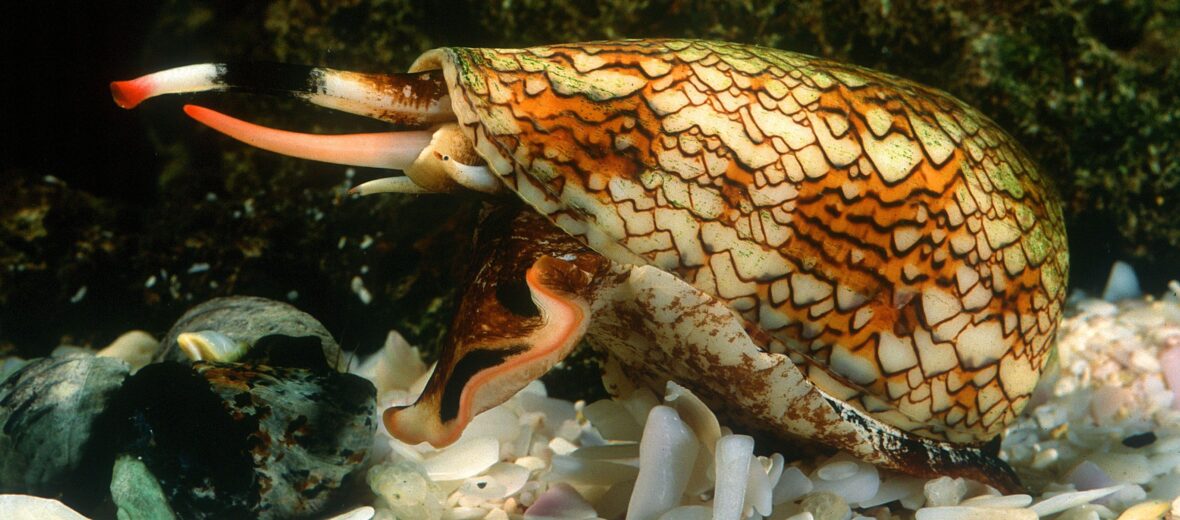
Seemingly harmless looking, the cone snail is actually a predatory animal that uses a specialized harpoon-like tooth to inject lethal venom into prey. They can be found in the Indian Ocean, Pacific Oceans, Great Barrier Reef, southern Australia, Baja California, California, and Hawaii. Cone snails live in predominantly shallow water near coral reefs. They hide under coral shelves, in the sand, or under piles of debris. Some can even be found living among mangroves. This article is dedicated to Katie.
First the Stats…
Scientific name: Conidae
Weight: Up to 5+ ounces
Length: Up to 8.5 inches
Lifespan: Up to 20 years
Now on to the Facts!
1.) They snag their prey by the use of harpoon-like hollow teeth (radula) that are rapidly stabbed into their prey to inject their toxic venom.
2.) Smaller cone snails’ stings hurt with no more punch than a bee sting. But larger ones, like Conus geographus, Conus tulipa and Conus striatus, have a sting that can sometimes be fatal.
3.) These snails are divided into 3 groups: piscivores – fish eaters, molluscivores – mollusk/snail eaters, and vermivores – worm eaters. The fish eaters are the most dangerous.
4.) Most cone snails are nocturnal (active at night) but some are crepuscular (active during dawn and dusk).
5.) The 3 main types of perception used are tactile (using its foot), visual (eyes to detect light), and chemoreception (detecting dissolved chemicals in the water).
But wait, there’s more on the cone snail!
6.) Their conotoxins have chemicals that are up to 10,000 times more potent than morphine. And there is no antivenom!
7.) The most toxic critters are the textile, geographic, and tulip snails with a higher risk of death with the geographic and textile snails.
Did you know…?
Cone snails are among the most toxic creatures known on earth. Over 30 cases of envenomation have been reported worldwide with a few fatalities. The venom, which has 100s of active components, inhibits transmission of neuromuscular signals in the body. This initially causing numbing and/or tingling at the sting site, which then spreads to the affected limb, finally progressing throughout the whole body.
8.) After the mating ritual, clusters of egg sacs (totaling around 40 eggs per sac) are produced and attached on an appropriate hard surface. In up to 15 days the eggs hatch to produce a planktonic version of the snail. In time, the larval snails develop into adults and move to the substrate to begin looking for prey.
Now a Short Cone Snail Video!
Also, check out the Critter Science YouTube channel. Videos added frequently!
Want to suggest a critter for me to write about? Let me know here.



